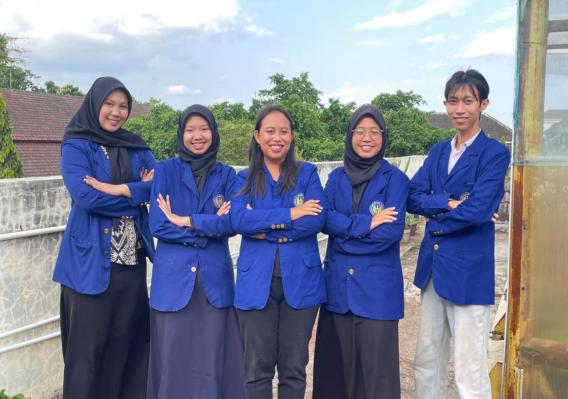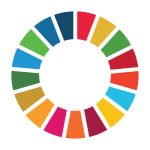Topical Powder of Centella asiatica for Diabetic Wounds

Chronic wounds caused by diabetes, known as diabetic ulcers (UD), remain a serious problem in Indonesia. Treatment with antibiotics is often ineffective because bacteria become resistant, wounds are difficult to penetrate, and bio-films form that hinder healing. Even as many as 78.2% of UD patients experience this condition.
This condition has become an important attention point in achieving the Sustainable Development Goal of healthy and prosperous lives, which emphasises improving the quality of healthcare services and innovation in chronic disease therapy to reduce morbidity.
In response to this challenge, a research team from Universitas Negeri Yogyakarta (UNY) — namely A. Bunga Calista, Muthiah Atiqoh, Susanti Agustina, Afifah Jihan K, and Bayu Ramadan, supervised by Dr. Evy Yulianti, M.Sc. — developed a topical powder based on nanotechnology containing asiaticoside (AS) from the plant centella asiatica (pegagan). AS is known to promote new blood vessel formation, reduce inflammation, and fight bacteria.
However, because its molecule is large and insoluble in water, its effectiveness is low if used directly.
To overcome this, researchers used Nanostructured Lipid Carrier (NLC) technology which helps AS to become more stable, more easily absorbed, and released gradually. The powder form was chosen because it is more suitable for open wounds such as UD. The pegagan extract was obtained from 25 grams of dried leaves, yielding 3.905 grams of concentrated extract with measured AS content. The researchers tested three surfactant ratio mixtures (Tween 80 and lecithin): 1:3, 1:1, and 3:1.
The best result was found in the 1:1 ratio, with a particle formation efficiency of 15% and smallest particle size (264.8 nm) indicating high stability.
Bunga Calista explained that laboratory tests showed AS was successfully entrapped in NLC with uptake above 80%. The formulation’s pH was also skin-compatible, making it safe to use. The spherical particle form seen in SEM supports optimal active substance release.
“The AS-NLC 1:1 formulation showed the highest anti-inflammatory ability, as well as increasing new blood vessel formation which is important for wound healing. Most notable, this formulation was able to inhibit MRSA bacterial growth by up to 52.18%, higher than antibiotic Ciprofloxacin which only achieved 31.7% after 24 hours,” she added. The research supports national programmes in public health and nutrition, and promotes self-reliance in natural-based pharmaceutical industry.
The AS-NLC pegagan topical powder has the potential to become a new, effective, safe, and affordable solution for treating diabetic wounds in Indonesia.






